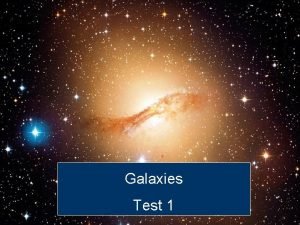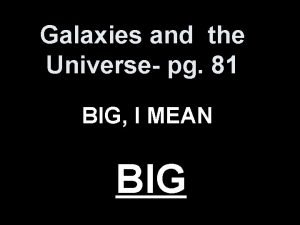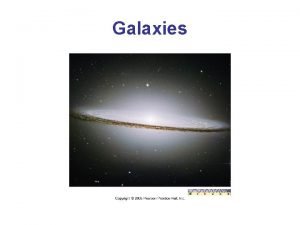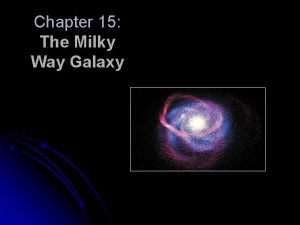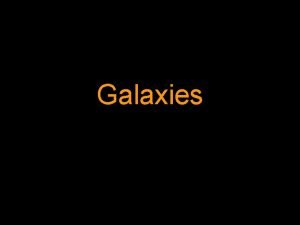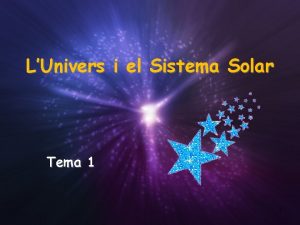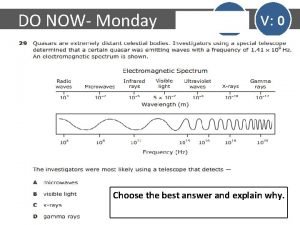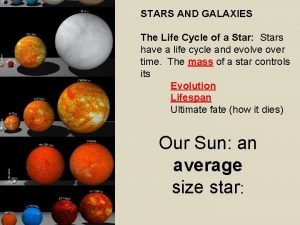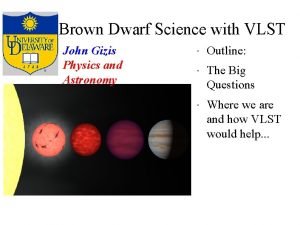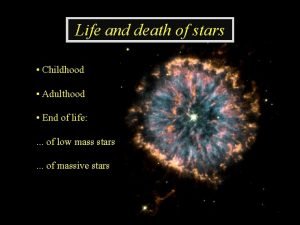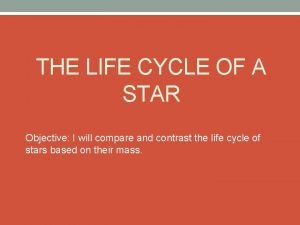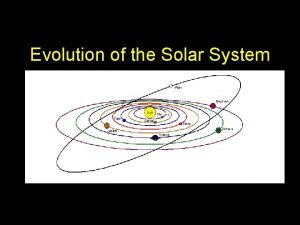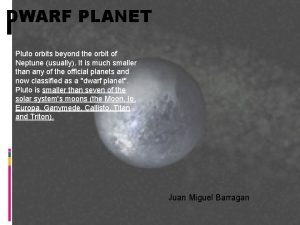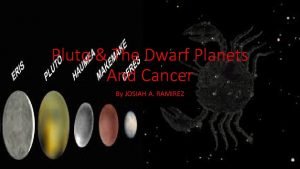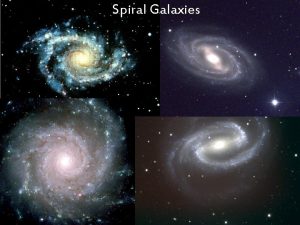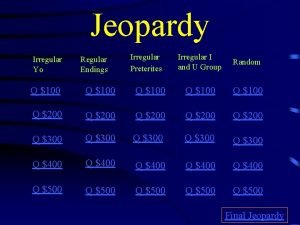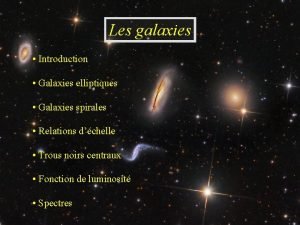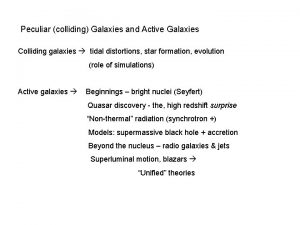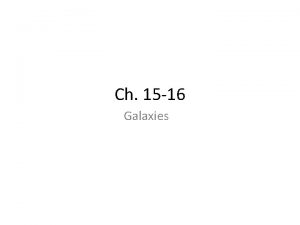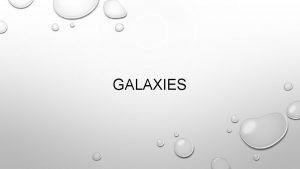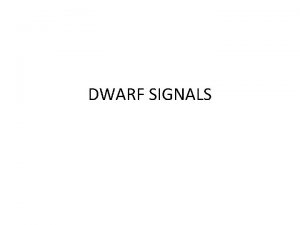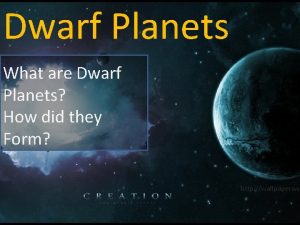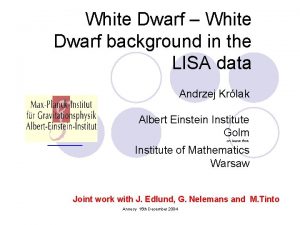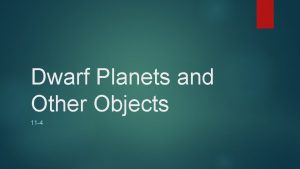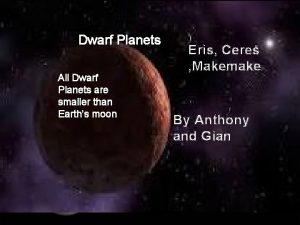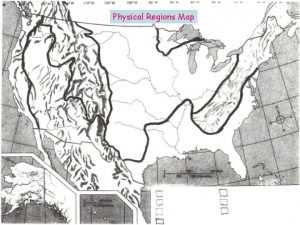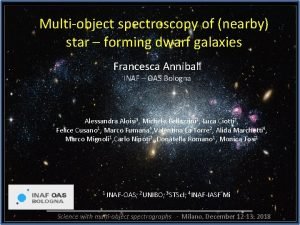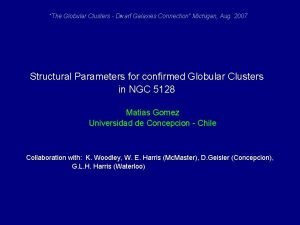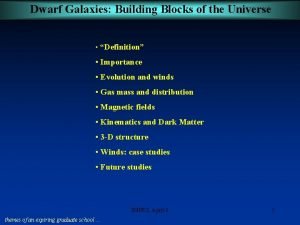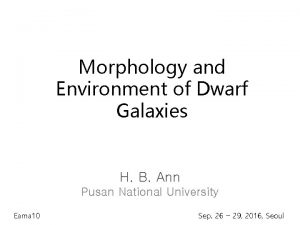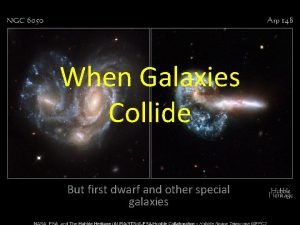H II Regions in Dwarf Irregular Galaxies S



























- Slides: 27

H II Regions in Dwarf Irregular Galaxies S. Holmes Dept. of Physics & Astronomy College of Charleston Advisors: P. Massey (Lowell Obs. ), K. Olsen (CTIO), C. Smith (CTIO), L. Penny (C of C)

The Galaxies in Question: The 3 Dwarfs (In the Local Group) NGC 6822 WLM Phoenix

Some Particulars of these Dwarves Irregular Galaxies Local Group NGC 6822: Many previous studies done (Hodge 1988, 1989) * “barred dwarf”, V magnitude = - 8. 0 WLM: limited studies * DDO 221, a. k. a. Wolf-Lundmark-Melotte (1926) * V magnitude = -8. 33 Phoenix: no H II studies * 1976 * No evidence of HII emission? * V magnitude = -10. 36

Galaxies & Galactic Morphology • Evolution • Types Spiral, Elliptical, Irregular. . . • Significance: How do H II Regions relate? What is an H II Region? . . .

A Tuning Fork Diagram

What an H II Region is. . . Ionized hydrogen gas (H II) (unlike H I -- neutral hydrogen) O & B stars (12000 - 50000 K) 1037 ergs sec-1 UV flux Discharged photons & the need to be at n = 1 Balmer transition, n = 3, n = 4 Visible

Discharged photons & the need to be at n = 1 Visible: 4000 Å - 7000 Å Balmer transition, n = 3, n = 4; 6530 Å H II detection: H filter (6510 Å - 6615 Å)

The Local Group (¿ Que es ? ) * ~40 member galaxies Milky Way, Andromeda (M 31) dominate . . . "Why study them? " * Proximity * Varying morphologies

You are looking from above…. The Milky Way is at the center

The • Cerro Tololo Inter-American Observatory • Part of the Local Group Survey project The Team Phil Massey, Lowell Observatory Paul Hodge, University of Washington Shay Holmes, College of Charleston George Jacoby, WIYN Nichole King, Space Telescope Science Institute Knut Olsen, CTIO/NOAO Abhijit Saha, KPNO/NOAO Chris Smith, CTIO/NOAO DATA

The DATA • Wide field, MOSAIC CCD camera 8000 x 8000 pixels 2 Special Limitations = Incompleteness • Excellent choice for analysis. . . For Example

Enter: The Atlas of the Andromeda Galaxy Copyright © 1981 by the University of Washington Press

Hodge’s 1989 NGC 6822

the SPLOG http: //www. lowell. edu/users/sholmes/splog 1. html

How to analyze H II Regions Filters: R, 5050 ~ 8010 Å H , 6510 ~ 6615 Å

The Naked Galaxies NGC 6822 WLM Phoenix

What Science comes from these pictures? • The Study of Star Formation H II as a tool • Morphological Comparison • Gas Dynamics

The Luminosity Function N(L) = A La d. L N = Number of regions of luminosity L A = constant L = luminosity a = found as slope of Log (N/d. L) vs. Log (L)

Detection • Discernable surface brightness limit (Kennicutt et al 1988): 2 x 10 -17 ergs sec-1 cm-2 • The By-Hand Method Precision correlated with depth and expanse of field

Regions in NGC 6822

The LUMINOSITY FUNCTION Turnover: Power-law slope fits only L > 1035 ergs sec-1

WLM

Turnover: L > 1035 ergs sec-1 IF you’re impressed now, wait till you see Phoenix. . .

Phoenix

Don’t laugh.

Translating the Results Standard a -value = -1. 7 for dwarf Irr • 32 new regions in NGC 6822, a = - 1. 8 ± 0. 1 vs. -1. 6 ± 0. 1 Turnover: Imcompleteness vs. Inability • 35 new regions in WLM, a = - 1. 5 ± 0. 1 vs. -1. 2 ± 0. 1 TURNOVER! • Uncharted waters of Phoenix: 7 detections! a = - 1. 7 ± 0. 1

Acknowledgements Mil gracias a P. Massey (Lowell Obs) D. Hunter (Lowell Obs) K. Olsen (CTIO) C. Smith (CTIO) y especialmente a, L. Penny & R. Dukes (C of C)
 Galaxys
Galaxys 4 types of galaxies
4 types of galaxies Elliptical galaxies facts
Elliptical galaxies facts Billions of galaxies
Billions of galaxies Evolution of galaxies
Evolution of galaxies Chapter 30 galaxies and the universe
Chapter 30 galaxies and the universe How are galaxies classified? *
How are galaxies classified? * E irregulars
E irregulars Galaxies lesson plan
Galaxies lesson plan What are galaxies
What are galaxies Waves are produced by stars and galaxies.
Waves are produced by stars and galaxies. Tipus de galaxies
Tipus de galaxies Era of galaxies
Era of galaxies Brainpop galaxies quiz answers
Brainpop galaxies quiz answers Life cycle of a galaxy
Life cycle of a galaxy Properties of elliptical galaxies
Properties of elliptical galaxies Critical density
Critical density John gizis
John gizis White dwarf star example
White dwarf star example White dwarf neutron star black hole
White dwarf neutron star black hole The sagittarius dwarf tidal stream
The sagittarius dwarf tidal stream Black dwarf star
Black dwarf star Dwarf planet symbols
Dwarf planet symbols Is josiah a dwarf
Is josiah a dwarf Brown dwarf
Brown dwarf The dwarf cho se hui
The dwarf cho se hui Dwarf thread worm
Dwarf thread worm Dwarf fortress
Dwarf fortress

